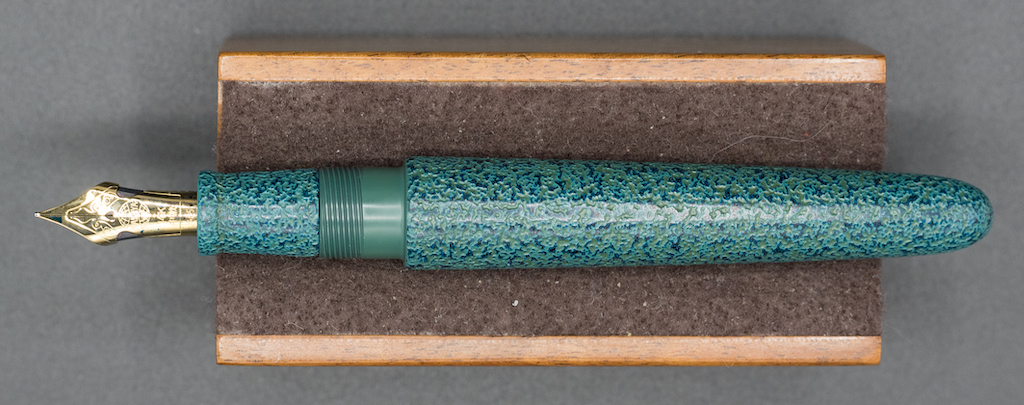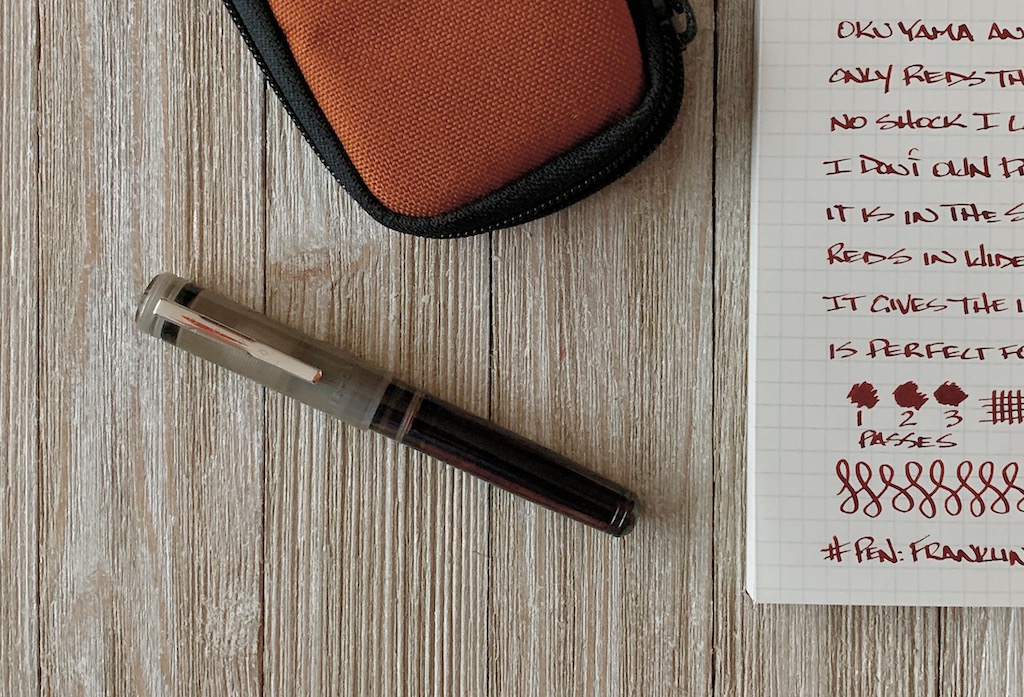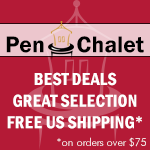One of the pens on my “holy grail” list was a Nakaya in the Ishime-Kanshitsu Midori finish. I finally purchased one in June 2018 from Nibs.com and chose the Nakaya Portable Cigar model. I can honestly say this is one of the most beautiful pens I own.
Ishime-Kanshitsu is a special process that creates a stone-like texture on an ebonite pen. “Ishi” means “stone” in Japanese and “Kanshitsu” is the layering process. Creating an Ishime-Kanshitsu surface takes three months. Urushi powder is sprinkled on the body of the pen to create the texture. Charcoal is rubbed over the surface to sharpen the Urushi grains. Then, layers of lacquer are applied to harden the body. Finally, a silver lacquer is applied (Source: Nibs.com). The results are extraordinary--just look at the various colors and details in the picture below.
Obviously, this time-intensive process creates a writing instrument that is also a work of art. The Ishime-Kanshitsu texture feels wonderful on one’s fingers and it is extraordinarily beautiful in person.
I chose the Nakaya Portable Cigar model because I didn’t have another Nakaya in this model and because the simple cigar shape shows off the textured surface well. This is a large pen (5.9 inches/150mm capped, which is just a tiny bit longer than a Montblanc 149, and 5.1 inches/130mm uncapped), but the ebonite and Urushi composition means that it weighs very little. This pen is not meant to be posted.
I chose a 14K medium-soft Nakaya nib and had it modified by John Mottishaw into an elastic nib. An elastic nib is different from a flex nib. It is a very soft nib with special cut outs that allow the nib to curve up from the feed like a paintbrush on paper (see the photos below).
The tines don’t really separate much, but you can get a bit of line variation with this nib.
I enjoy writing with this nib more than any other nib I own. It is remarkably smooth, and writing each letter is like painting a tiny picture. Writing with an elastic nib is a soothing experience because you must write more slowly since you are essentially painting words. It’s unlike any other nib I’ve ever used, and it’s very zen-like.
That said, I initially had some difficulties with my nib. It seemed starved for ink. Writing (even with my preferred Iroshizuku inks) felt dry, and I encountered lots of hard starts and skipping. I sent the pen back to nibs.com and they worked some magic on the feed and the nib. When it came back, the nib wrote much better. It produces a lovely, wet line and it no longer skips. I do still experience some hard starts on down strokes, but overall the nib functions quite well.
One of the main weaknesses of any Nakaya pen is the converter (it is the same as the Platinum converter). I don’t know why Nakaya insists on this tiny converter that works properly only when it’s mostly full. Once you use half the ink, a huge bubble develops in the converter and you have to manually push the ink down to continue writing. They could, at least, insert a ball into the converter to prevent this from happening (in fact, I’m thinking about doing this myself using a ball from an unused cartridge I own). What would be better is if they would create a superior converter.
I’m quite happy with my Nakaya Ishime-Kanshitsu Midori pen. I love the texture, shape, balance, and nib on this pen. It is simply a joy to use. Of course, such beauty comes with a steep price. I paid $1,280 for this model with an elastic nib. As always, the question of whether or not a pen is “worth it” is dependent upon the person who uses the pen. I feel this pen is worth every penny because of its unparalleled beauty and because the elastic nib is so wonderful to write with (now that it’s been properly adjusted).
Here are a few more pictures of this beauty for you to enjoy. I must say, it is one of my most photogenic pens!
Enjoy reading The Pen Addict? Then consider becoming a member to receive additional weekly content, giveaways, and discounts in The Pen Addict shop. Plus, you support me and the site directly, for which I am very grateful.
Membership starts at just $5/month, with a discounted annual option available. To find out more about membership click here and join us!





































